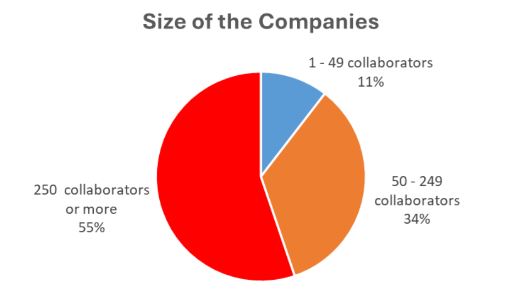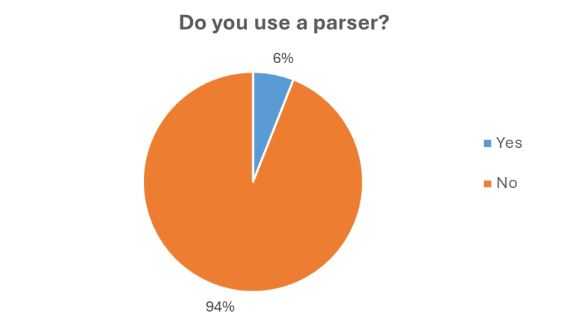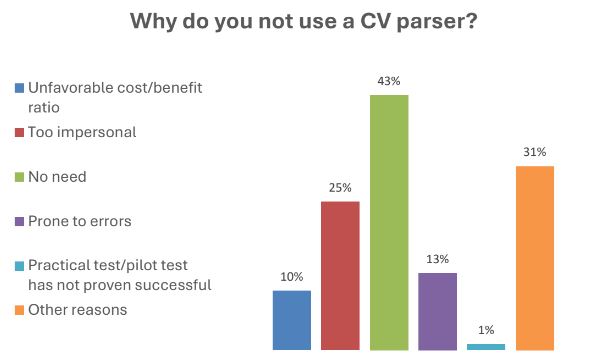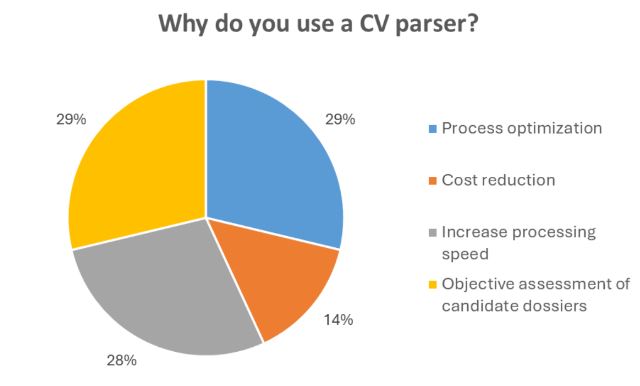Results of our “application parsing” survey
According to a survey by JobScan (2023), 97 percent of Fortune 500 companies use an ATS (Applicant Tracking System). This ATS usually also includes a tool for application parsing. In the application process, this digital text analysis determines the success or failure of an application.
Application parsing is intended to use AI to make it easier to select candidates and thus speed up the recruitment process. However, there are some challenges with parsing, e.g. that even qualified candidates are rejected due to formal errors or because the tool cannot interpret the documents submitted.
As a specialized outplacement consultancy operating throughout Switzerland, we are often asked by our clients how they should deal with “application parsing”. This and the current euphoria for AI prompted us to conduct a survey on the use of application parsing in Switzerland. The aim of the survey was to find out more about the use and satisfaction with the results.
1. Scope of the survey
Our survey was sent out in 3 languages (German, French, English) to over 4,000 customer contacts. The contacts were divided into different company sizes (according to the categorization of the federal government):
2. Results on the use of “application parsing”
We received the first interesting result on the use of parsing:
Only 6% of all responses use a parsing tool in their organization. This shows that the prevalence of parsing tools and their use tends to be overestimated.
Interestingly, not only large but also medium-sized organizations use parsing, in each case around 50% of the corresponding responses.
3. Results from organizations that do not use parsing
For the organizations that do not use parsing, we were interested in the reasons for this:
“No need” was the most frequently cited reason for this question. However, the fact that parsing is too impersonal, error-prone and costly was also criticized.
The following other reasons were highlighted:
- Shortage of skilled labor and personnel (large companies):
- “Relying on a parser when there is a shortage of skilled labor and personnel makes no sense!”
- “Only useful for mass applications -> no longer relevant today!”
- The shortcomings of parsing (large companies)
- “The keyword search can only scan those applications that contain them – generational difference in technical terms”
- Our organization has not introduced parsing or has not yet dealt with it.
However, a small proportion of respondents (13%) stated that they would use a parsing tool in the future.
In summary, it can be said that some of the organizations have made a conscious decision not to use parsing, while the rest have not yet addressed the issue.
4. Results for organizations using parsing
Responses concerning the reasons for using parsing are fairly evenly distributed:
The responses indicate that cost reduction is not the main focus, but that process optimization, processing speed and an “objective assessment” of the dossiers are more important.
Parser use: jobs, tools and satisfaction
The large companies use in particular “Talentsoft” and “workday” as tools. Parsing is generally used for all jobs and satisfaction is average to less satisfied (“Had a more user-friendly system before”).
Medium-sized companies use “Personio Recruiting; recruitee; onlyfy and Softgarden” as tools. Parsing is used in particular for specialists (skilled labor, technical specialists) and managers (team leaders) and here too, satisfaction is average.
The shortcomings of parsing are named here: “However, a follow-up check of the screened applications is recommended. Because there are also good candidates who are rejected by the parsing process without any reason. The process is only suitable to a limited extent.”
Parser use: Problems
Basically, all users mention the “evaluation problems” (100%) as a shortcoming. One comment puts it in a nutshell: “Uncertainty in the parsing selection. The process virtually rewards linguistic application competence.”
The following aspects were mentioned:
- Parsing does not make a linguistic interpretation: the technical terms in the job advertisement must be used identically.
- The complexity of the profiles sought, which may require specific formulations, becomes a problem.
- “Parsing has the risk that we miss out on suitable candidates, even though they fulfill the overall package when looking at the entire CV, but only if you interpret the CV and know the background of the functions”.
- There are sometimes different technical terms, which are used differently depending on the (up to date) training.
- “The keyword search can only scan those applications that contain them – generational differences in technical terms.”
- – Different job titles and technical terms for certain industries (and countries).
The fundamental criticism thus remains: “No machine can read between the lines and feel its way into a CV.”
5. Findings
- Application parsing is only used by a few organizations. Many non-users have specifically decided against using it.
- The shortcomings of parsing (evaluation problems = incorrect selection) are recognized by users and non-users alike.
- User satisfaction with parsing tools is average.
- Especially in times of a shortage of specialists and managers, their use is not seen as expedient.
- A small proportion of non-users want to get to grips with parsing in the future. This can be understood as an expression of the expectation of a qualitative development of AI.
For our outplacement clients and course participants, this means:
- well-structured, appealing application documents with well-prepared content remain more successful than the purely textual image of the advertisement.
- parsing must be taken into account in the application process insofar as the (technical) terms of the advertisements must be used (also applies to employers without parsing). However, the application documents must be enriched by the personal aspects of your own professional development, including personal strengths/successes.
For the use of AI in the HR application process, this means that
AI tools are as good as the underlying concept. Reducing the quality of an application to the naming of certain terms in the application documents does not do justice to the complexity of the issue. What is missing is a holistic view of the documents that combines structure, presentation and content.
Even if parsing is only used for the pre-selection of candidates, the result is not (yet) satisfactory.
Especially in times of a shortage of skilled workers and personnel, the usefulness of these tools must be questioned







